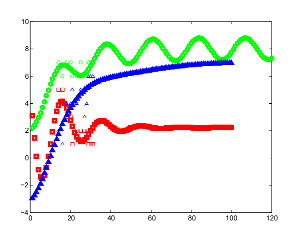In group decisions by consensus, being more certain does not imply making a better decision. In social psychology, certainty is the degree to which a person is sure that the decision made is correct (accurate). For a while, people thought that group decisions increase decision accuracy, but recent research showed that only the certainty of the decision increases under these circumstances (Punchochar and Fox, 2004). Researchers also thought that under certain conditions, group discussions may lead to an increase in knowledge connected to the decision task, but Fidler and Kareev (2006) proposed an experiment in which an increase in the quantity of information made participants more uncertain. In their experiment, a smaller sample of information lead to an increase in the accuracy of decisions. Their observation was explained by the fact that smaller samples can have a wider variation.

On the other side, researchers also noticed that group discussions lead to underestimations or overestimations of confidence (Oskamp, 1982). In other words, there is a difference between the certainty and the accuracy percentage estimates. When certainty is greater than accuracy, the phenomenon is called overconfidence and when accuracy is greater than confidence, it is called under-confidence (Punchochar and Fox, 2004; Slevin et al., 1998; Unal et al., 2005). Later attempts to avoid the troubles of group decisions by using computer aided decision tools only lead to further concealment of the dynamics of certainty during group decisions.
By omitting to measure certainty during group decisions, researchers were driven to partially inaccurate conclusions. They assumed that certainty has a linear evolution throughout the decision-making process, or that its evolution is simply irrelevant. Based on the idea presented by Cătălin Zamfir (2005) in his book, ”Uncertainty. A psychosocial perspective”, I showed in a paper published by the Group Decision and Negotiation (Gheondea-Eladi, 2015) that the evolution of certainty during group decisions is in fact a dynamic process. To this end, I constructed a dynamic model, based on interaction and showed that in group decisions by consensus certainty oscillates towards equilibrium. More than this, I showed that when group members are able to report changes in their certainty for each piece of information (i.e. when communication is unilinear), the certainty of each person evolves without reaching the equilibrium value. Under such circumstances, the equilibrium value either remains constant or increases with respect to its initial value. This confirms previous research which showed that uncertainty increases during group discussions, but offers a mathematical model that explains this increase without the previous assumptions.
The main consequence of this result is the possibility to explain some of the future cases of over- and under-certainty. More accurately, such cases may appear any time before groups reach consensus. In such cases, over- and under-certainty appear as consequences of the oscillatory evolution of the certainty and not the result of a linear process in time. Still, the results presented here, are not valid for any type of group decisions. Certainty has been shown to oscillate on an ascendant trend in decision-making groups that aim to reach consensus and in which participants choose a decision-making strategy that has no returns to previously debated topics (knowledge transmission is performed in a unilinear fashion).
Fidler K and Kareev Y (2006) Does decision quality (always) increase with the size of information samples? Some vicissitudes in applying the law of large numbers. Journal of Experimental Psychology: Learning, Memory, and Cognition 32(4): 883–903.
Gheondea-Eladi A (2015) The Evolution of Certainty in a Small Decision-Making Group by Consensus. Group Decision and Negotiation. Available from: http://link.springer.com/10.1007/s10726-015-9436-8.
Oskamp S (1982) Overconfidence in case-study judgments. In: Kahneman D, Slovic P, and Tversky A (eds), Judgment under uncertainty: Heuristics and biases, New York: Cambridge University Press.
Punchochar JM and Fox PW (2004) Confidence in Individual and Group Decision-Making: When ‘Two Heads’ Are Worse Than One. Journal of Educational Psychology 96(3): 582–591.
Slevin DP, Boone LW, Russo EM, et al. (1998) CONFIDE: A collective decision-making procedure using confidence estimates of individual judgements. Group Decision and Negotiation 7: 179–194.
Unal R, Keating CB, Chytka TM, et al. (2005) Calibration of expert judgments applied to uncertainty assessment. Engineering Management Journal 12(2): 34–43.
Zamfir C (2005) Incertitudinea — o perspectivă psihosociologică. Bucureşti: Editura Economică.